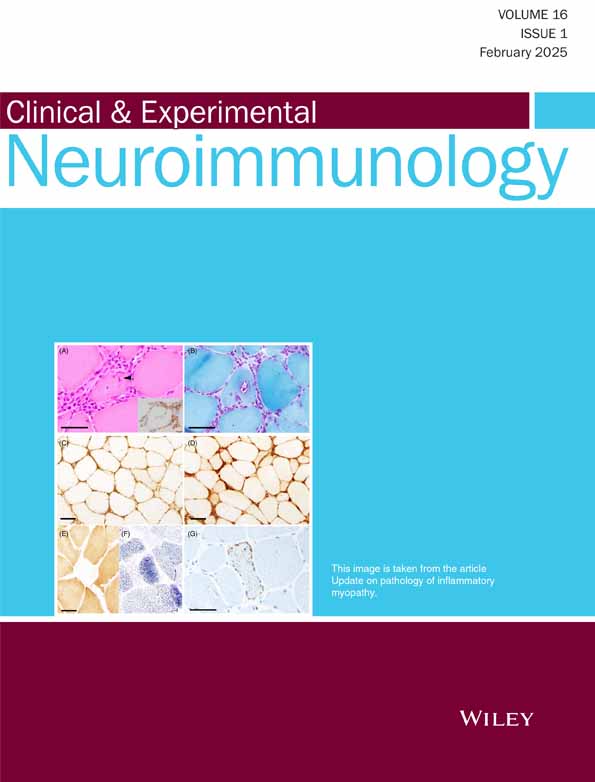Th17 pathway-related immune signatures in the pathobiology of myasthenia gravis: Integrating the roles of regulatory/effector cytokines and transcription factors
Nibu Varghese, Madhu Nagappa, Nikhitha Sreenivas, and Saikat Dey these authors contributed equally.
Abstract
Objectives
Myasthenia gravis (MG) is an autoimmune disorder mediated by antibodies against the acetylcholine receptor (AChR), muscle specific kinase (MuSK), and other antigens in the neuromuscular junction. Antibody production is influenced by T lymphocytes. The T helper 17 (Th17) subset, an inflammatory lineage of Th cells, is associated with several autoimmune diseases. Functional interactions between T lymphocytes and pathogenic antibody responses including aberrant Th17 cell responses have been reported in MG. However, the precise mechanism(s) underlying the activation and/or pathogenic transformation of Th17 cells are not clearly known. The current study aimed at simultaneously exploring the roles of the inducers, master regulator transcription factors, and effectors of Th17 cells in patients with MG.
Methods
In this cross-sectional study, quantification of gene expression of IL6, IL17A, STAT3, and RORC in the peripheral mononuclear cells by quantitative polymerase chain reaction (qPCR) as well as estimation of plasma levels of IL-1β, IL-6, and IL-17A cytokines by multiplex suspension assay were carried out in 59 patients with MG and 61 healthy controls.
Results
Gene expression levels of IL17A were significantly upregulated in patients as compared to healthy controls. The plasma levels of IL-1β, IL-6, and IL-17A were significantly elevated in patients compared to healthy controls. IL17A as well as RORC gene expressions correlated with the clinical features. IL17A gene expression levels were higher in AChR-MG patients.
Conclusion
The present study supports the crucial role of the Th17 pathway in the pathobiology of MG, including its potential influence on disease severity.
CONFLICT OF INTEREST STATEMENT
None declared.
Open Research
DATA AVAILABILITY STATEMENT
The data will be made available by the corresponding author upon request.




